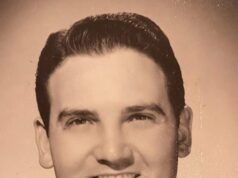[An update of this story appears on page 13 of the September 10 issue of Ace under the headline, What Lexington Needs.]
Since 1989, Ace Readers and Writers have been asking “What Lexington Needs.”
For the entirety of that 20 years, one constant refrain has been: Lexington needs a mid-sized music venue—something comparable to a Bogart’s.
With Lexington’s proximity to I-75 and I-64—and its perfect location as a play-thru for bands already stopping in Louisville, Cincinnati, Knoxville, and Nashville—this has resulted in entertainment dollars left on the table for decades.
Many permutations have tried to fill that void—Rupp Arena tried the “heart of Rupp Arena” series with great acts and terrible acoustics, for example. More recently, in August, Steve Earle sold out the Opera House; the Decemberists will play the Singletary Center in October; and there’s now live music all over town from Lynagh’s to the Green Lantern to Al’s Bar, and half a dozen other spots. But there’s no doubt that something has been missing, and it was missing even during the glory days of the Wrocklage.
The Grand Opening of Buster’s on September 4 (with Wax Fang, These United States, and Chico Fellini) in the Old Tarr Distillery on Manchester Street is Lexington’s first meaningful attempt to fill this void.
The crowd on opening night ranged from 18 on up through 60-somethings (who were admittedly just there to wish the enterprise well)—but the core of the group was comprised of Lexington’s 20- and 30-somethings, with discretionary time and dollars to spend.
For music lovers, it was instantly clear that owners Clark and Jessica Case had invested wisely in sound and lights.
Other than the pool tables, the new Buster’s has little in common with the old Buster’s the Cases loved on Main Street before it was bulldozed to make room for the still un-built CentrePointe project—but the new Buster’s is the first real symbol that something good has come out of those ashes.
Even Harold Tate, executive director of Lexington’s Downtown Development Authority (hardly a regular at the now-dead-Dame) was on hand to celebrate for most of the evening—an example other city leaders would’ve done well to emulate, regardless of the packed holiday weekend schedule.
Because this was Important.
It’s important for business. It’s important for the future of the Distillery District, which might now have a chance. It’s important to the quality of life for the 20 to 40-somethings who live and earn here. It’s important for anyone who’s ever given a minute of lip service to the idea of Destination 2040.
Politicians will come and go (so will bands), but for those veterans and natives among us who share an institutional memory of Lexington that goes back as far as the old Bottom Line, it was immediately obvious that this new venue has the potential to be the most transformative thing that’s happened to the fabric of Lexington’s music scene since WRFL’s first broadcast in 1988.
That’s saying something.
And that’s what it felt like Friday night.







